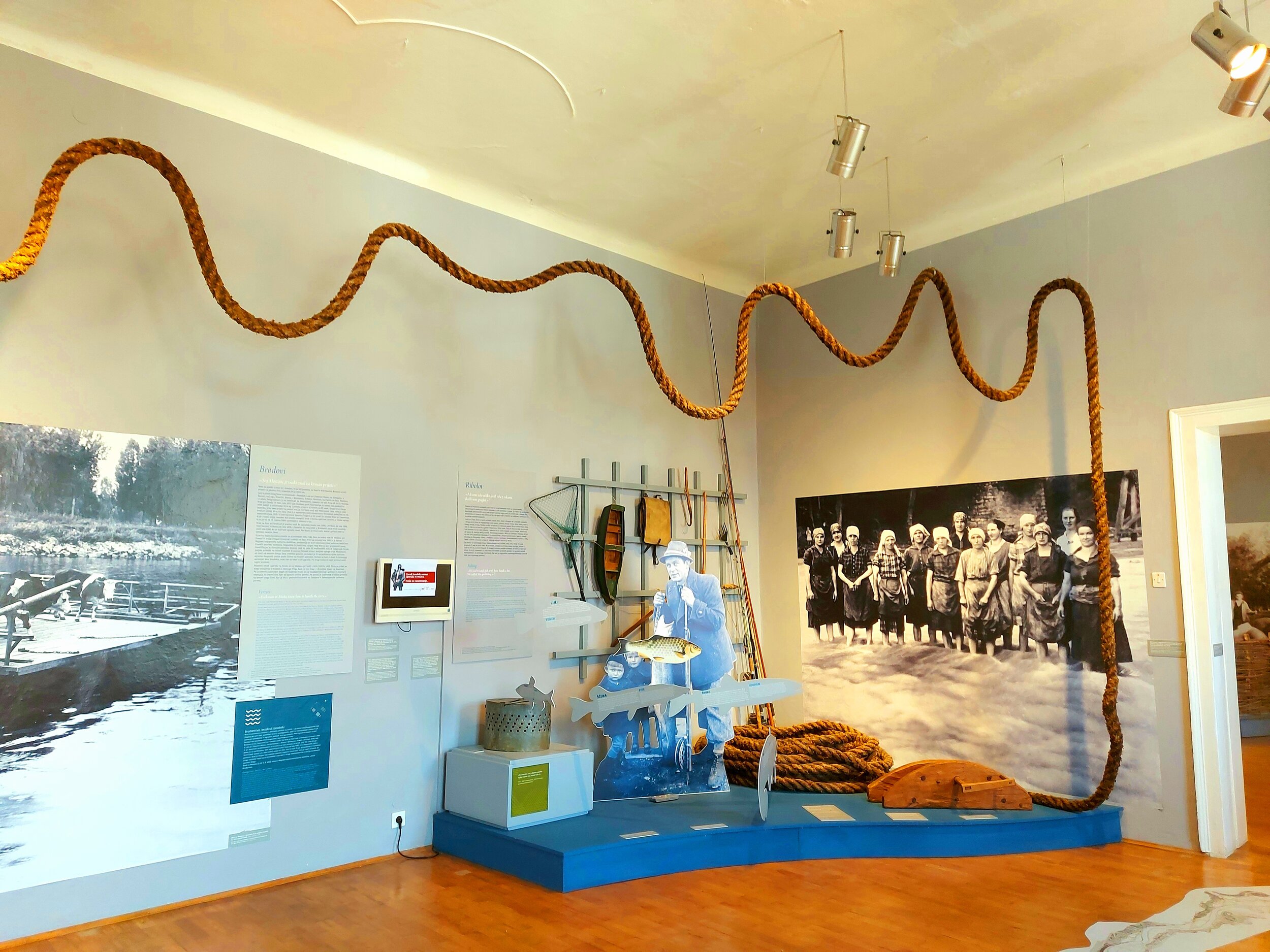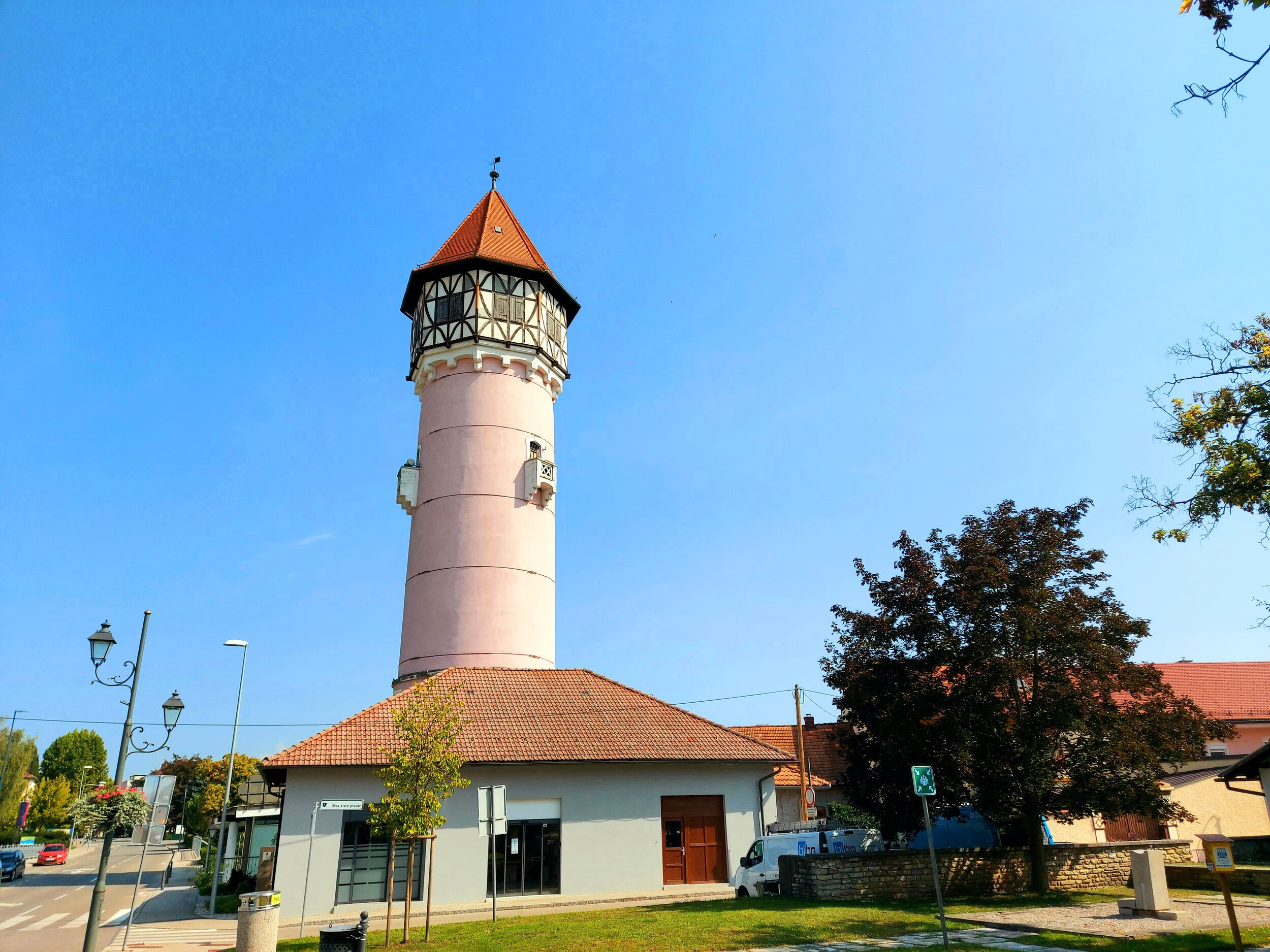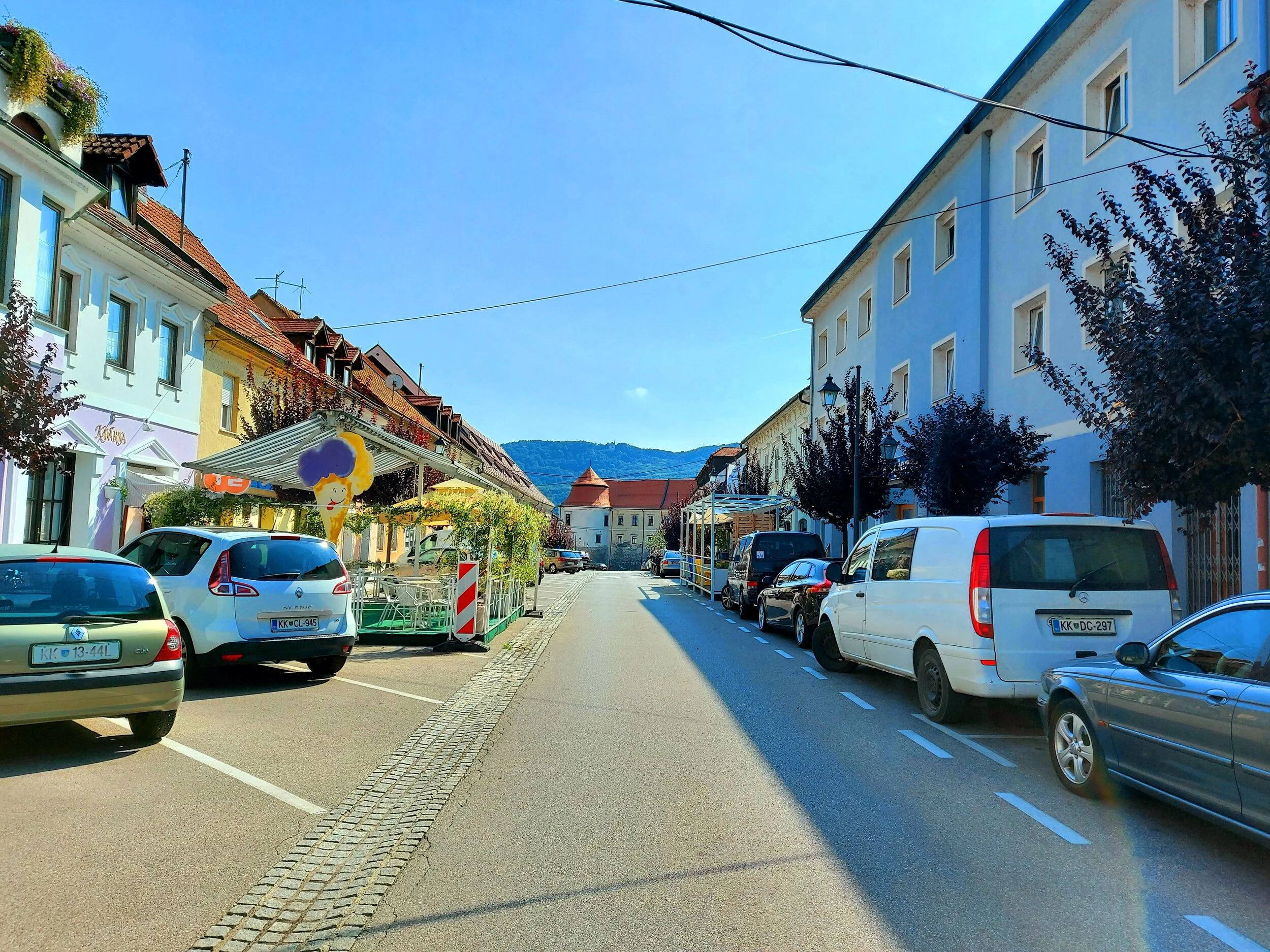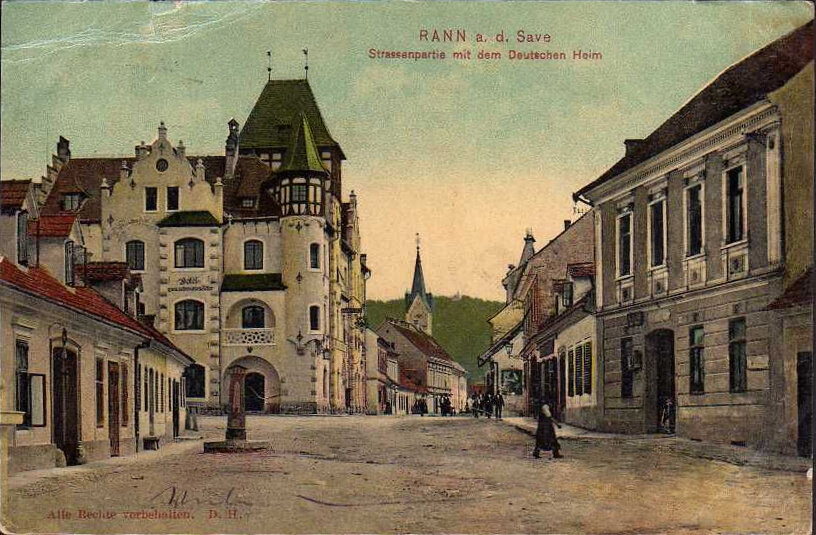27: Brežice // A Real Room’s Room
The Knight’s Hall is the centerpiece of Brežice’s excellent Posavje Museum // © John Bills
It was, quite frankly, the most magnificent room I had come across in the four corners of Slovenia. No room literally takes the breath away, any claims to the contrary are wilfully exaggerative, but these sorts of spaces usually come close. The best compliment I can give it is that I knew full well I was going to enter it, yet it still managed to surpass my lofty expectations.
The Knight’s Hall in Brežice’s Posavje Museum is the sort of room that comes straight out of 19th-century Russian literature, where the slightly irritable (and generally unlikeable) protagonist is embarrassed by the wealthy in front of a girl he simultaneously desires and despises, setting in motion a series of events that usually ends with our hero dying young or in prison. It could be by Turgenev, Tolstoy, Dostoevsky or anyone else.
A vibrant red carpet ran from staircase to staircase, further accentuating the regal feel of it all, those staircases perfectly designed for grand entrances and shocking arrivals. It was every bit as red as you imagine a red carpet to be.
Not that the carpet should get top billing. The Knight’s Hall is famous for its painted walls, although the art stretches beyond the walls, all the way to the ceiling and down to the floor, stopping only for the parts of the room that are sullied by boots and brogues. A serene sky blue provided an idyllic background to gods, goddesses, heroes, villains, muses and more, Posavje landscapes and inspirational events. The hall usually plays host to cultural events of all kinds, a sentence that could have been assumed, but the global pandemic meant diligently placed rows of individual chairs instead of boisterous excitement and artistic excellence.
It was also bloody miles from the train station, and memories of Puspokladany flooded my mind as I stomped from terminal to museum, a near-40-minute walk past cornfields and football stadiums, the home of NK Brežice 1919. I couldn’t tell you much about the team other than that they were founded in 1919 and their colours were light blue and orange, a rare combination throughout the European leagues.
The centre of Brežice // © Filefluid / shutterstock
Truth be told, I couldn’t have told you a huge amount about Brežice itself, a town of fewer than 7,000 people just a short walk from the border with Croatia. That geographical setting tells you much about its medieval history, meaning Ottoman invasions and peasant revolts a-plenty, but Brežice’s name doesn’t feature all too heavily in modern history books. While many may look resentfully at that sentence, the modern history of this part of the world suggests it isn’t an entirely terrible thing.
Brežice is famous for the castle that houses its magnificent museum, but also for its water tower, a 1914-construction that retains a pink hue as it juts 46 metres into the sky. It hasn’t functioned as a water tower since 1972, but by that point, its reputation had been confirmed. The octagonal reservoir at the top hinted at an out-of-left-field Tudor period, a sort of architectural engineering version of Talk Talk’s later albums (listen to Laughing Stock already), but that clearly wasn’t the case.
I didn’t pay much attention to the tower until the museum had been explored, a conscious decision to focus more on the many rooms of the castle as opposed to the hulking visage of a tower. It was the only decision, as the Posavje Museum is one of the finest museums in the entire country, up there with Municipal Museum in Idrija. What is it about regional museums, standing tall above more celebrated institutions in bigger cities?
The Posavje Museum is a treasure trove, a rabbit hole, a honeycomb maze minus the terrifying presence of the black-handed, black-hearted Strong Kongou and Kijabi Tankobo. The entire history of Posavje is laid out in front of the visitor, from archaeological history to peasant revolt to the nine flags of the 20th century. Posavje’s tobacco-growing history stood out, with fascinating educational boards telling of how men used to prefer being photographed with a cigarette in hand than not, back when it was cool. Owning a lighter in those times was power, although anyone who has been drunk without one in the 21st century will argue that little has changed. There were a whole lot of rules surrounding tobacco usage back in the day, although again, not too different now. When the master craftsman was in the room, no smoking was allowed (no cursing or boozing, either). Still, people smoked, starting as young as nine, chewing wormwood leaves to hide the smell.
Then there was the hall of Posavje’s finest, a mass of green-tinged boards telling the tales of biographers like Fridolin Kavčič, poets like Ljudmila Poljanec and geographers like Viktor Tiller. Most interestingly there was a note about Štefanija Krošelj, an egg collector and seller who passed away in 2012. Eggs were harshly rationed when she was young, barely eaten at all, so people in towns would bring their eggs together and sell them at the market, using the money for more valuable things. Štefanija was one such seller, taking as many as 600 eggs to market in Zagreb, leaving home at two in the morning in order to set up the stall for 6am. She sold the eggs early and went back towards Posavje, ready for an evening’s shift in the field.
Think carefully before complaining about how hard your life is.
The Posavje Museum in Brežice Castle was full of things that deserved my attention. There was a room dedicated to rope, an exhibition that managed to make rope exciting. There was the story of the Gottschee Germans, fantastic examples of dress from history and more, not taking for granted the basic architecture of the castle itself, a quite magnificent mansion every bit the equal of its nearby peers in Sevnica and Podsreda.
Was it worth a 40-minute walk in the searing September sun? You damn right, it was.





